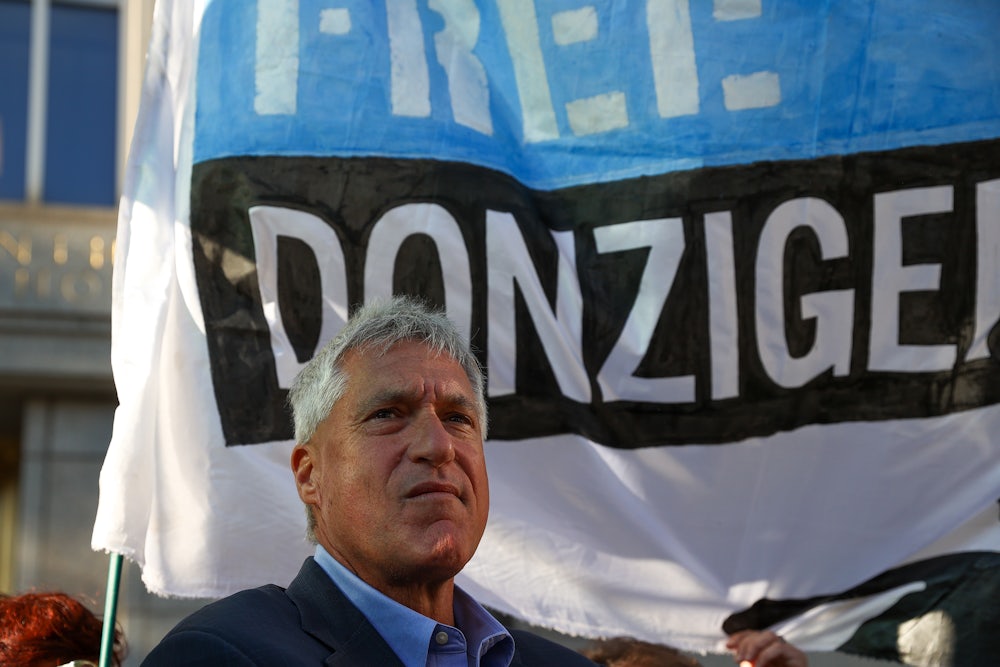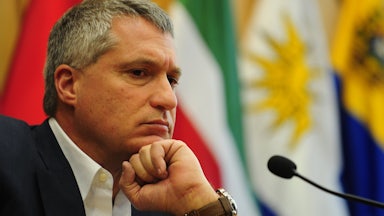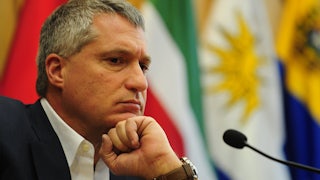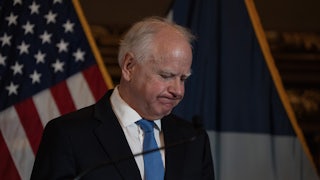Steven Donziger, an embattled environmental lawyer and activist, has spent the last two decades of his life battling an oil company for despoiling part of the Amazon rainforest and disrupting the lives of thousands of its inhabitants. He enlisted activists and celebrities, pressured local officials, sought to bring international attention to his cause, and brought a class-action lawsuit through the courts of Ecuador to hold Chevron, the firm that earned his enmity, accountable.
Roughly 10 years ago, Donziger’s moment of triumph fell apart amid a careful and comprehensive legal siege by Chevron. The company accused him of achieving his monumental victory through corrupt means, a charge he denies, and successfully dismantled his life along the way. Now Donziger is urging the Supreme Court to intervene in a decision that sent him to federal prison. If the court agrees to take up Donziger v. United States this week, it could rewrite the separation of powers between the three branches of the federal government.
The case stems from the long-running legal battle between Donziger and Chevron. In the 1990s, Donziger began representing local farmers and members of Indigenous tribes living near the Amazon river in a class-action lawsuit against the oil giant Texaco, which had drilling operations in Ecuador at the time. They alleged that those operations had caused serious ecological damage to the area and destroyed their livelihoods. Chevron inherited the lawsuit when it acquired Texaco in 1999.
After a U.S. court transferred the lawsuit to Ecuadorean courts, Donziger began a public relations campaign of protests, celebrity endorsements, and other attention-grabbing tactics to raise awareness of his clients’ plight. Among his efforts was his participation in the 2009 documentary Crude, which portrayed Donziger as a heroic crusader for the little guy who faced long-shot odds against one of the world’s most powerful multinational corporations. Finally, in 2009, the Ecuadorean courts sided with Donziger’s clients and eventually awarded them $9.5 billion in damages.
Donziger’s participation in the documentary came back to haunt him. While reviewing the film, Chevron lawyers noticed a neutral court-appointed expert taking part in strategy sessions with the plaintiffs and their lawyers. The oil giant then successfully fought in U.S. courts to obtain the rest of the footage to find instances of impropriety that could help them overturn the judgment in Ecuador. Chevron sued Donziger in 2011 under federal RICO laws for allegedly obtaining the ruling in Ecuador through corrupt means. In 2014, Judge Louis Kaplan sided with Chevron and made the judgment in Ecuador unenforceable in U.S. courts.
The ruling was catastrophic for Donziger, who has denied any wrongdoing. Kaplan’s findings led to Donziger’s disbarment in New York and the District of Columbia. When federal prosecutors in the Southern District of New York declined to prosecute Donziger for any alleged offenses, Kaplan hired a private law firm to prosecute him on six counts of criminal contempt of court for allegedly defying Kaplan’s orders at various points throughout the litigation. The private lawyers appeared in court on behalf of the United States of America, a privilege usually reserved for the Justice Department, and were described in court filings as assistant U.S. attorneys. Donziger was convicted and sentenced to six months in prison.
Kaplan justified the private prosecution by pointing to the court’s inherent authority as well as Rule 42 in the Federal Rules of Criminal Procedure, which states that if the federal government “declines the request” to prosecute criminal contempt, “the court must appoint another attorney to prosecute the contempt.” Donziger asked the appellate courts to intervene by arguing that Kaplan’s decision violated the Appointments Clause. That clause generally requires that federal civil servants must be appointed by the president if they wield a major executive branch power, such as prosecuting crimes.
In other words, Donziger argued that he could not be prosecuted by a private court-appointed attorney if the Justice Department declined to do so. By proceeding anyway, he argued, the court had violated the Constitution’s separation of powers. A three-judge panel in the Second Circuit Court of Appeals upheld Kaplan’s orders over Donziger’s objection, but not without a dissent by Judge Steven Menashi. “This is not how defendants are prosecuted in a system of separated powers,” he wrote, quoting from the Supreme Court’s ruling against Richard Nixon in the Watergate tapes case. “In our constitutional framework, ‘the Executive Branch has exclusive authority and absolute discretion to decide whether to prosecute a case.’”
The Second Circuit panel majority cited the Supreme Court’s ruling in the 1987 case Young v. United States ex rel. Vuitton et Fils S.A., which grounded the right to appoint private attorneys in criminal contempt cases in the courts’ inherent authority, even though they exercise executive power. “While contempt proceedings are sufficiently criminal in nature to warrant the imposition of many procedural protections, their fundamental principle is to preserve respect for the judicial system,” Justice William Brennan wrote for the court. He emphasized that courts “cannot be at the mercy of another branch” when deciding to initiate such cases.
At the same time, even the panel noted that that ruling was in “some tension” with the high court’s later Appointment Clause cases, which have generally favored sharper boundaries and chains of command between the three branches, especially where executive power is concerned. The Supreme Court ruled in United States v. Arthrex in 2021 that decisions by administrative law judges in the Patent Office must be reviewable and revisable by the office’s director to comply with the clause. One year earlier in Selia Law v. CFPB, the justices struck down a provision in the Dodd-Frank reforms that only allowed the president to fire the director of the Consumer Financial Protection Bureau for cause.
In his petition for review, Donziger asked the Supreme Court to resolve whether his prosecutors were judicial or executive officers. “Young concluded that such private special prosecutors exercise judicial power,” he told the court. “But every relevant subsequent decision by this court … is consistent with the unanimous holding of the court of appeals here—that private special prosecutors trying criminal contempt offenses in the name of the United States exercise executive power. Appointing special prosecutors by rule is consistent with Young, but not with this court’s later decisions.”
The Justice Department, for its part, urged the court not to take up the case for procedural and substantive reasons. Among the latter ones, it argued that the Appointments Clause did not apply because the special prosecutors’ appointments were only temporary and limited in scope. The government also insisted there was no tension between Young and subsequent case law on the matter.
Criminal contempt prosecutions are sparse enough that a ruling in Donziger’s favor would not greatly change things on the ground in federal courts across the country. But it would signal the Supreme Court’s continued desire to draw sharper lines between the three branches, influencing future lawsuits that challenge how federal power is structured. If the court agrees to hear the case, oral arguments would likely take place this fall, with a decision to come by July of next year.










